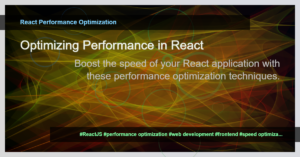Demystifying HATEOAS: A Guide to Hypermedia as the Engine of Application State
RESTful APIs have become the de facto standard for building modern web applications. While the principles of REST (Representational State Transfer) focus on designing stateless, scalable, and interoperable APIs, the question remains: how can we achieve flexibility and discoverability in our APIs? This is where HATEOAS comes into play.
Understanding HATEOAS
HATEOAS, which stands for Hypermedia as the Engine of Application State, is a principle that enriches RESTful APIs by enabling clients to navigate the application’s available actions dynamically. In simpler terms, HATEOAS provides the necessary links and metadata within API responses to facilitate the discovery and manipulation of resources.
The Importance of HATEOAS in API Design
1. Self-Discovery
One of the main benefits of HATEOAS is that it promotes self-discovery. By including links and metadata in API responses, clients can autonomously navigate the application’s resources without relying on external documentation. This makes it easier to evolve and version your API without breaking existing clients.
For example, let’s say we have an API endpoint that returns a list of blog posts. With HATEOAS, each blog post entry can include hyperlinks to actions like viewing, editing, or deleting the blog post. This allows the client application to dynamically adapt to the available actions, reducing the need for explicit knowledge of each endpoint URL.
2. Flexibility
HATEOAS provides a high level of flexibility by allowing API clients to dynamically traverse the application’s resources. This means that as new features are added or existing ones are modified, the client application can leverage the provided links to navigate and interact with the API without requiring prior knowledge of the specific endpoints.
For instance, if a blog post has comments, HATEOAS allows the API response to include links to view or create comments for that specific post. By following these links, the client application can seamlessly integrate these features without the need for hardcoded URLs or strict API contracts.
3. Scalability
By leveraging HATEOAS, RESTful APIs become more scalable since they eliminate the need for clients to have a deep understanding of the API’s structure or the availability of specific endpoints. This allows API developers to add or modify resources and actions without breaking existing clients, improving the overall scalability of the system.
For instance, suppose our blog post API evolves to support additional features like tagging or likes. With HATEOAS, the responses can include links to retrieve related tags or like/unlike a post, ensuring that clients can seamlessly adapt to these changes without requiring modifications to their codebase.
Implementing HATEOAS in API Design
To implement HATEOAS in API design, follow these best practices:
- Include hyperlinks in the API response data, specifying the actions available for each resource.
- Use standardized link relation names defined by established internet standards (e.g., IANA’s Link Relations) to maintain interoperability.
- Provide relevant metadata alongside the links to aid clients in understanding the purpose and semantics of each action.
- Design your API to support graceful evolution, allowing for the addition or modification of resources and actions without breaking existing clients.
- Consider using established API specification formats like JSON Hyper-Schema or Collection+JSON, which provide built-in support for HATEOAS.
By implementing these best practices, you can harness the power of HATEOAS to create flexible, scalable, and discoverable APIs that empower your clients to effectively interact with your web applications.
In conclusion, HATEOAS is a fundamental principle in RESTful API design that promotes self-discovery, flexibility, and scalability. By leveraging hypermedia links and metadata, HATEOAS enables clients to navigate and interact with the API dynamically. Incorporating HATEOAS best practices in API design ensures seamless evolution and empowers clients to adapt to changes without breaking their codebase.







